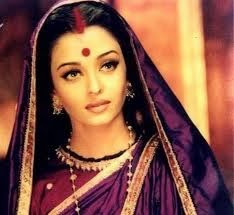Kalaratri
On the seventh day of Chaitra Navratri, Shakti is worshipped in the form of Kalaratri (Kala=time, black in reference to the primal darkness before the Creation, Ratri=night). Kalaratri is a form of Kali. She is dark in complexion and rides atop a donkey. She is depicted with four arms, Her right hands positioned in Abhaya and Varada mudras and Her left hands holding a sickle and a thorn-like iron weapon. In mythology, She slayed the dreadful demon Raktabeej, as Miss Saxena relates:
In this form Goddess Kalratri killed Raktabeej. Raktabeej was a demon who could multiply from every drop of his blood which fell on the ground. The Goddess Kaalratri killed him by licking the blood before it could reach the ground and hence conquered him.
Kalaratri’s form is dreadful and repulsive in appearance (She is the most misunderstood of the Hindu Goddesses by many Westerners!), but She is very protective of Her devotees and protects them against the evil spiritual influences of demons and dark forces. While She has a ferocious side, She also has a very maternal side. She also aids Her devotees to rid their lives of tamasic qualities, effectively destroying ignorance. She governs the planet Saturn and is associated with the Sahasrara (thousand, infinite) chakra, which is located on the crown of the head. It is the chakra of Pure Light and of Supreme Consciousness. Awakening the Sahasrara chakra leads to ultimate spiritual enlightenment.
Her mantra is:
Ekveni Japakarnapura Nagna Kharastitha
Lamboshthi Karnikakarni Tailabhyakta Sharirani
Vaampadolla Salloh Lata Kanthak Bhushna
Vardhan Murdha Dhvaja Krishna Kalratri Bhayankari
Which means in English:
She is naked, rides on an donkey, has a long tongue, lustrous body, wears ornaments on her legs like lightning, is black in color, has unlocked hair, big eyes and ears and is very dangerous looking. Meditating on this form of Kalratri removes all obstacles as well as removes all magical effects created by others.
For purposes of pronunciation, I have included a link to the spoken mantra (The mantra itself lasts for the first minute of this video, after which a speaker gives a lecture in Hindi).
Resources:
http://www.drikpanchang.com/hindu-goddesses/parvati/durga/navdurga-kalaratri.html
http://rampuri.com/navdurga-navratri/
http://www.chakras.net/energy-centers/sahasrara
http://mantrashlokas-madhuri.blogspot.com/2011/06/maa-kalaratri-worship-of-fiercest-forms.html
http://experiencehinduism.com/festivals/navratri-seventh-day-seven-form-durga-kalaratri
http://vedicgoddess.weebly.com/3/post/2012/08/kalaratri-by-yogi-ananda-saraswati.html
http://www.astrosage.com/festival/navratri/devi-kalaratri.asp








